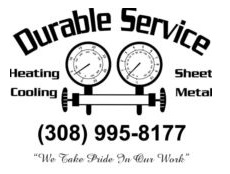
Would you believe that more than one-half of your home’s energy costs are for your heating and cooling? That’s why it’s critical to have an energy-efficient HVAC system.
Furnace efficiency standards were last updated to an Annual Fuel Utilization Efficiency (AFUE) rating of 80% in 2015. This rating system illustrates how effective your furnace is at combusting natural gas into heat. An AFUE rating of 80% means your furnace will waste about 20% of the fuel it uses while generating heat.
In 2022, the U.S. government revealed new energy-efficiency standards for residential gas furnaces that would greatly decrease emissions, save homeowners money and stimulate sustainability.
The updated standards are projected to:
- Save Americans $1.9 billion annually.
- Cut carbon emissions by 373 million metric tons and methane emissions by 5.1 million tons over 30 years, the equivalent of what 61 million homes emit yearly.
Starting in 2029, the proposed rule would demand all new gas furnaces to feature AFUE ratings of 95%. This means furnaces would combust nearly 100% of the gas into usable heat.
With these facts in mind, you may be asking yourself "what happens to my existing furnace"? For the time being, very little, as the proposed rule will not go into effect until 2029 at the earliest and does not affect furnaces that are already in use.
But if your furnace is nearing the end of its life and a replacement is needed in soon, highly energy-efficient furnaces are ready and available. Find out how these furnaces can help you save on energy bills now.
Guide to Condensing Furnaces
How Condensing Furnaces Work
A condensing furnace is a kind of heating system that uses a secondary heat exchanger to trap wasted heat from the furnace's exhaust gases. This limits the extent of energy wasted, increases energy efficiency and lowers CO2 emissions. It also involves less natural gas to create the same rate of heat when comparing one to other types of furnaces.
How Condensing Furnaces Differ from Non-Condensing Furnaces
The main difference between a condensing furnace and a non-condensing furnace is condensing models use a secondary heat exchanger to collect any wasted heat from its exhaust gases, while the other does not.
Expected Longevity of a Condensing Furnace
The life span of a condensing furnace is dependent on the brand, model and other factors. Usually, a condensing furnace is likely to last between 10-20 years with appropriate maintenance and regular service. If your heating system doesn’t have regular furnace maintenance, the equipment may struggle to perform as well, ultimately failing earlier than anticipated.
Why Condensing Furnaces Are More Expensive
Typically, condensing furnaces type of system is a lot more efficient than standard, single-speed furnaces, as it only consumes the minimum amount of energy necessary to heat your home, resulting in more savings on your utility bill.
The majority of variable-speed furnaces are condensing furnaces, although a handful are available in non-condensing models with lower AFUE ratings. In order for a furnace to be classified as a condensing furnace, it must offer an AFUE rating of 90% or higher.
Do Variable-Speed Furnaces Run All the Time?
A variable-speed furnace doesn’t run all the time. Rather, it runs at different speeds based on the temperature in your Holdrege home as well as the amount of energy it uses to sustain that temperature.
When sufficient energy is demanded to maintain your desired temperature level, the furnace will increase to a higher speed in order to keep up with demand. Doing this will ensure more efficient heating in your home while also providing quieter operation.
Guide to Two-Stage Furnaces
Two-Stage Furnaces: What They Are and How They Work
As the name suggests, a furnace with two levels of operating (high or low) is called a two-stage furnace. On the low stage, the furnace operates at a reduced capacity to help maintain the chosen temperature for your home more efficiently. During the high stage, the furnace will instead run at maximum capacity to satisfy demands for greater heat. With a two-stage furnace, you can maintain improved energy efficiency and stable temperatures all across your home.
While two-stage furnaces are very efficient, not all all models are condensing furnaces.
Does a Two-Stage Furnace Run All the Time?
A two-stage furnace should not run constantly. In the low stage of operation, the furnace runs at diminished capacity in order to maintain a desired temperature more efficiently within your home. When more energy is needed to sustain the set temperature, the unit shifts to its high stage and operates at full capacity. As a result, two-stage furnaces are able to help reduce energy costs without operating around the clock.
Contrasting Two-Stage and Variable-Speed Furnaces
Two-stage furnaces have two stages of operation, low and high. During the low stage, the furnace runs at reduced capacity to help maintain a desired level of comfort within your home. When additional warmth or cooling is needed, the furnace will change over to its high stage and operate at peak capacity.
Variable-speed furnaces, meanwhile, can operate at several speeds in order to uphold a more precise temperature at home. With more options for temperature settings, you also have more flexibility for heating you home and can enjoy greater savings on energy bills.
Differences Between One- and Two-Stage Furnaces
One-stage furnaces have a single stage fan speed and operate either at full power or not at all. In other words, the furnace runs constantly in order to maintain a desired comfort level within your home.
Two-stage furnaces, on the other hand, have two stages of operation, low and high. While in the low stage, the furnace runs at lower capacity in order to maintain the desired temperature more efficiently. When more warmth or cooling is necessary, the furnace will change over to its high stage and operate at peak capacity.
Make Your Furnace Installation Appointment with Durable Service Today
It takes experience and dedication to stay up to date about furnace technology advancements. That’s why Durable Service professionals are here to help with a no-obligation, no-pressure quote for furnace installation. We’ll assess your home, your heating requirements and your budget before helping you find the best solution. Contact us at 308-995-8177 to get started today!

